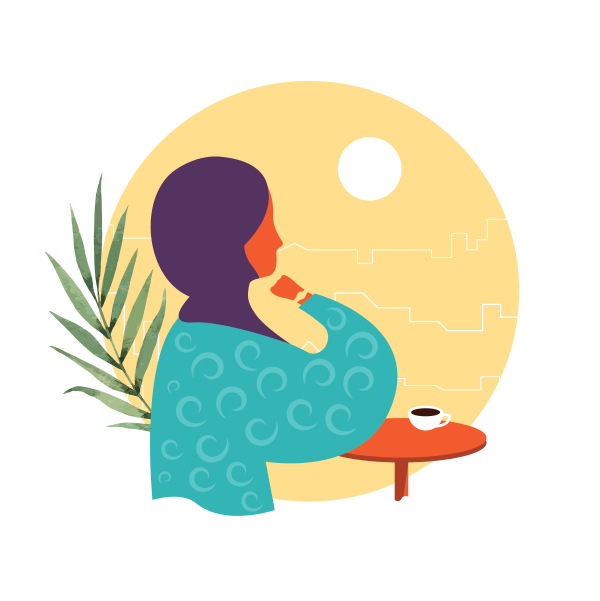
Thank you! You should receive an email asking you to confirm your subscription.
Oops! Something went wrong while submitting the form.
May 4, 2023

Women’s and feminist movements and organizations have played an outsized and crucial role in advancing progress on the United Nations’ Sustainable Development Goals (SDGs), the world’s shared plan to end extreme poverty, reduce inequality, and protect the planet by 2030. These groups’ contributions have not only pushed forward SDG5—which seeks to achieve gender equality and eliminate violence against women and girls—but are also fostering systemic, long-term changes that influences all aspects of the 2030 agenda. Still, despite growing evidence demonstrating women’s movements impact in combatting ongoing humanitarian and health crises, they face chronic funding and resource gaps that threaten their capacity and sustainability.
ImpactMapper´s Key to Change project makes an important contribution to the evidence base highlighting the effectiveness of women’s movement-building organizations and how they are making progress on the SDGs. The project developed one of the first databases that takes stock of the number of groups impacting the SDGs, as well as their strategies, achievements, and biggest needs. By mapping the broader landscape of this work—categorizing organizations by geography, focus area, and reported impact—the project has also created a networking and knowledge sharing tool that women’s groups can use to find and connect with other changemakers in their regions.
Women’s and feminist organizations and movements made instrumental progress towards ending gendered discrimination, inequality, and violence—and promoting the SDGs’ social, cultural, and political outcomes. These organizations have:
1) Expanded women’s and girls’ access to essential services including education, healthcare, and reproductive and sexual health—enabling women and girls to participate as full citizens in school and society, and ensuring survivors of violence have access to safe spaces and wraparound supports.
2) Shifted social and cultural norms to reduce discrimination based on gender, race, sexual orientation and class, increasing the likelihood that over time, women and other marginalized groups will enter the workforce, seek health care, and engage in politics and public life.
3) Strengthened coalitions and mobilized funding to build movements for justice, gender equality, nonviolence, which will continue to advance longer-term shifts in policies, norms, and behaviors.
4) Increased women’s wealth and economic power and opportunities, helping to combat higher rates of poverty, unemployment, and unequal pay and social protections for women and marginalized groups.
5) Strengthened laws and policies that promote gender equality and combat gender-based violence, for example, through policy activity that criminalizes domestic and sexual violence in national and local laws, and advocating for equitable labor, land, and reproductive rights.
6) Increased the use of a feminist lens in public and policy spaces, and strengthened the evidence base that shines a light on gender and power disparities, for example by training government officials, health workers, and media on gender-related topics; influencing government budgeting processes; and producing research that can inform legislation and programs to reduce gender-based inequities.
7) Increased the number of women in political and leadership positions, making progress towards the global underrepresentation of women at all levels of decision making.
8) Improved environmental sustainability, stewardship, and agricultural practices, which will help mitigate climate change’s impacts on the highest-risk groups, such as women and migrant, rural, equatorial, and nomadic populations.
9) Supported more sustainable and inclusive peace processes in the face of intensifying violent conflicts across the globe, for instance by bringing women peacebuilders to negotiating tables.
In light of growing threats to gender equality globally, and continued high rates of violence towards women and girls, philanthropy and the social sector have a crucial role to play in safeguarding these wins. Despite the progress they have made, women’s movement-building organizations continually face backlash, particularly against their work to advance women’s sexual and reproductive rights. Compounding these challenges, women’s movements experience large resource and funding gaps. A large majority of the organizations (between 64% and 71%) that informed Key to Change operate on shoestring budgets of less than $50,000, and three quarters said funding gaps often require them to make difficult cuts to staff, programs, or overhead.
To protect and drive progress towards the SDGs, funders and decision makers must invest boldly and significantly in women’s groups and movements. The Key to Change project surfaced the following recommendations for funders and social sector supporters:
1) Support the movement-builders making systemic, durable change over longer time scales, rather than focusing on short-term wins. To do so, assume the risks of supporting frontline organizations, rather than concentrating support in large organizations that already have substantial funding.
2) Provide women’s movement-building organizations with multi-year, general operating support that they can use for staff, overhead, and capacity building—and not just project-specific funding.
3) Assist women’s movement builders in connecting and communicating with other funders and funding opportunities.
4) Provide support or technical assistance for measurement and evaluation to enable organizations to learn, improve their work, and measure their impact and effectiveness.
5) Increase support for building the capacity and skills of female activists, to adequately resource and sustain women’s movements.
6) Use philanthropy’s positional power to support and improve collaboration across the movement, for instance via networking and convening.
7) Identify and support organizations facing backlash and reversals of progress.
Read the full report for even more insights about how women’s movement-building organizations are advancing the SDGs at the local, regional, and national levels—and how philanthropy can use equitable funding practices to accelerate this progress.
Report link: https://www.impactmapper.com/sdg5-projects/new-report